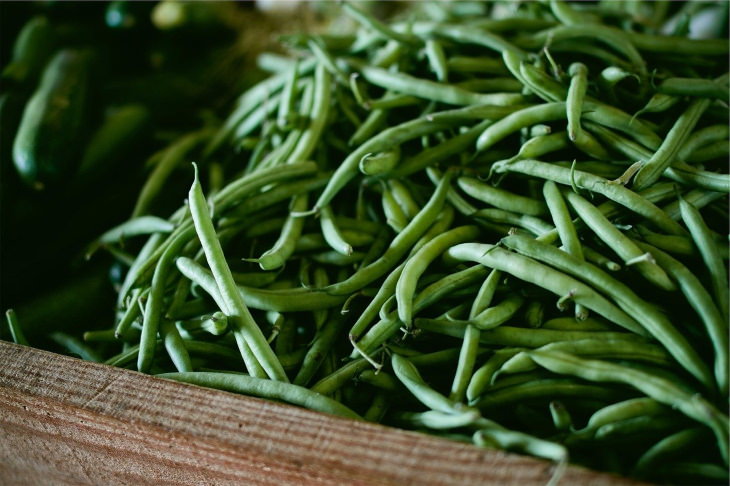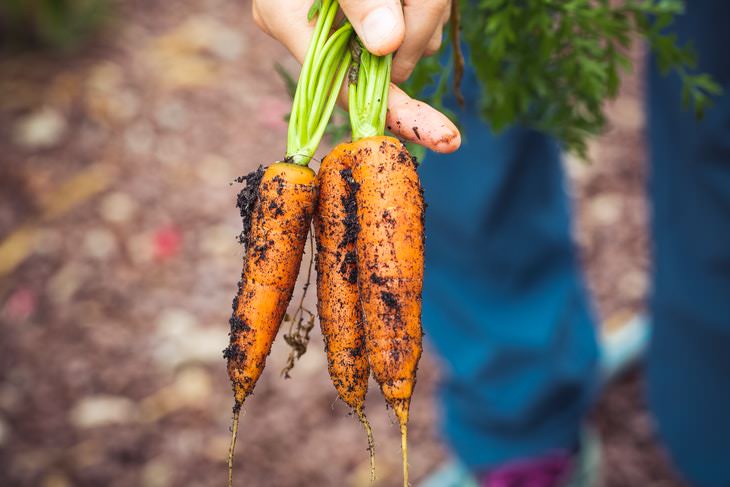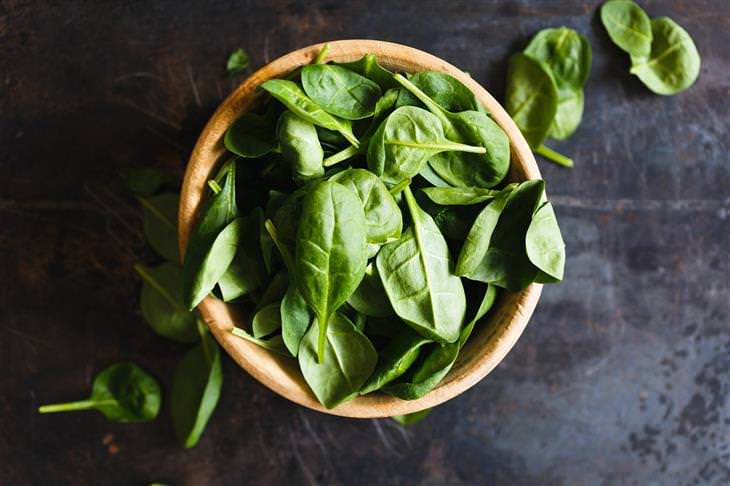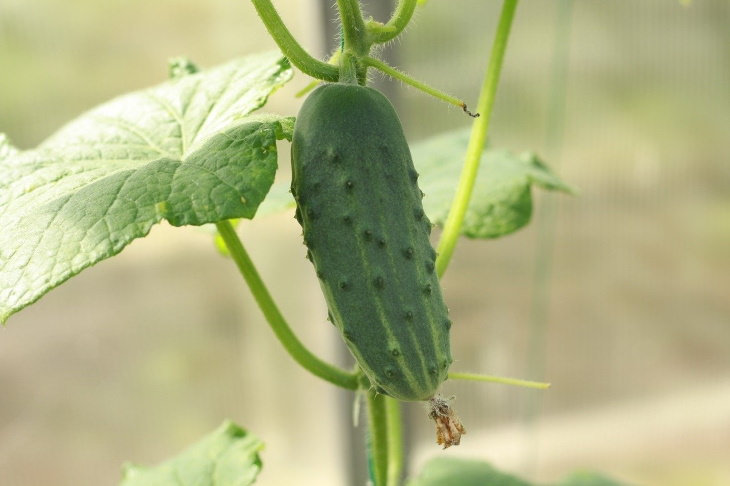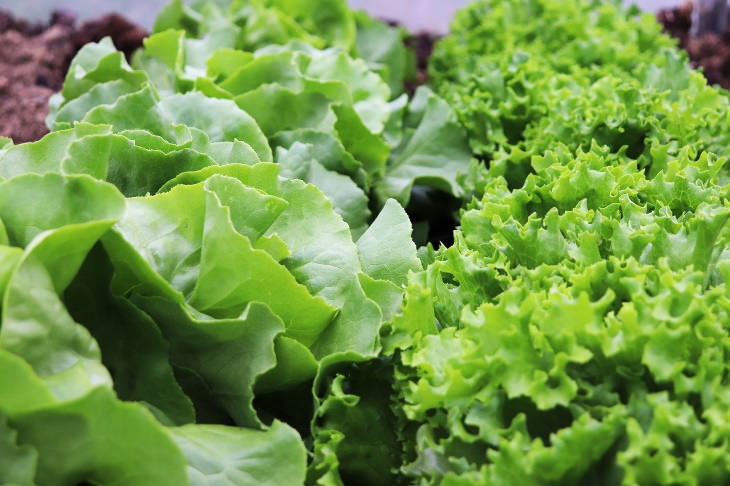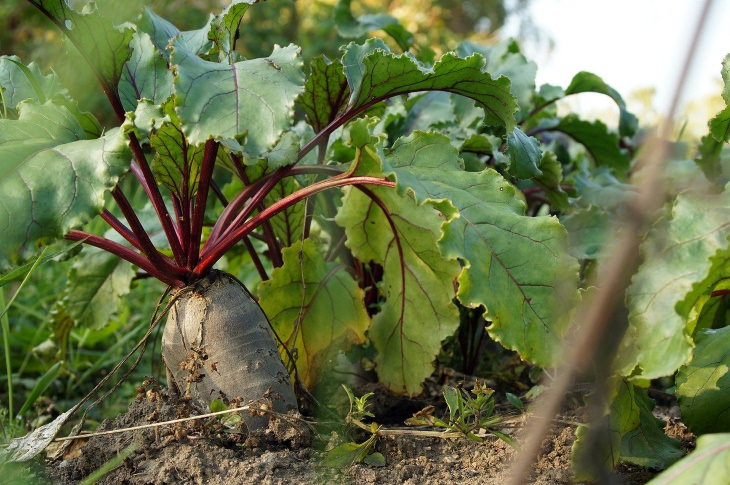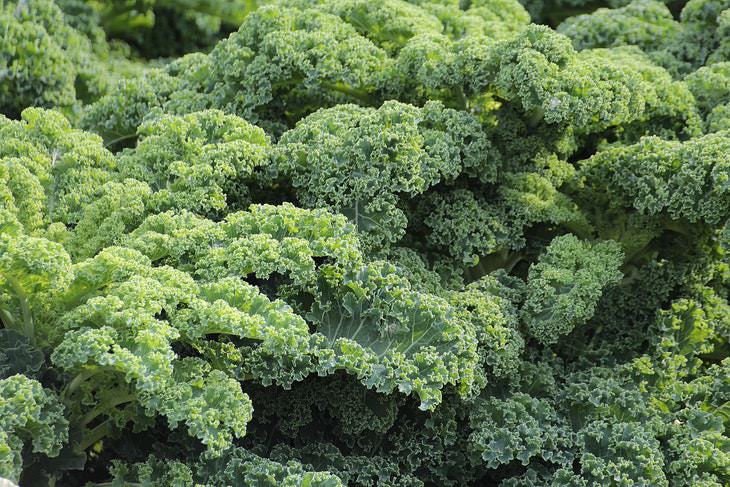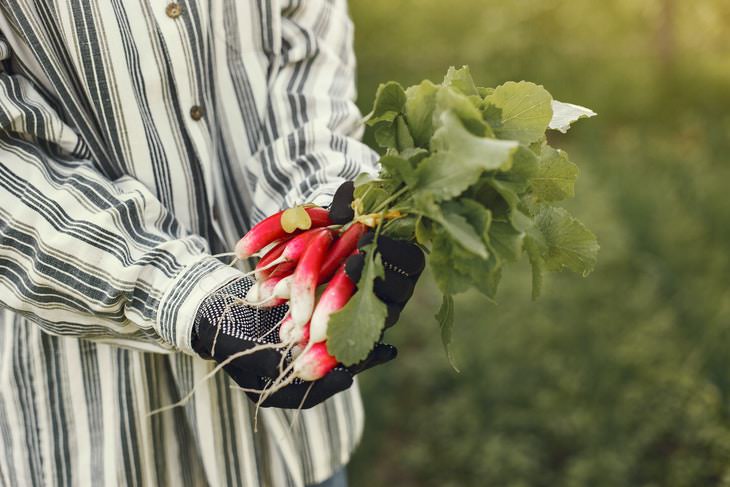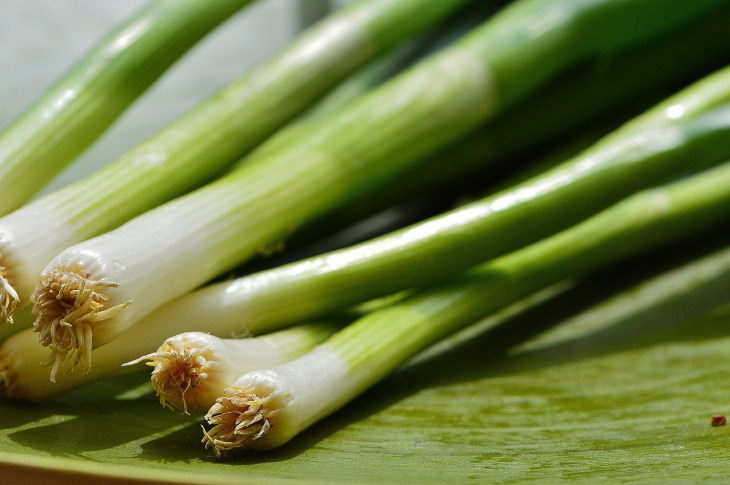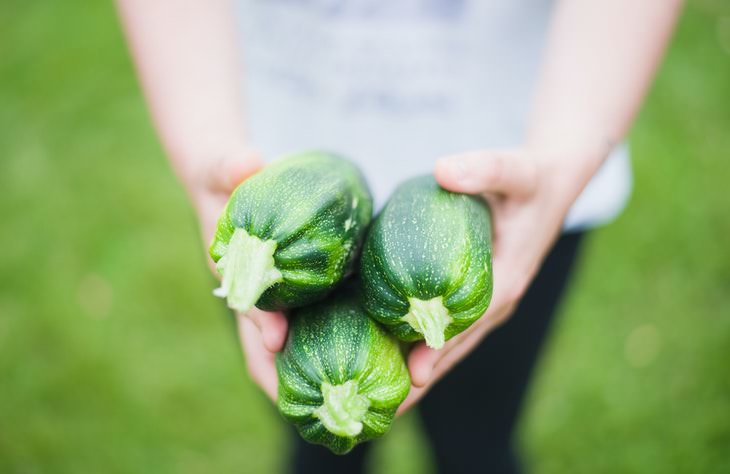1. Bush beans
There are two types of green beans - bush beans and pole beans. The advantage of bush beans is that they are more compact and faster to grow. Pole beans yield more, but they take longer to grow and require a pole for support. If you prefer tender green beans, the bush variety is the superior choice.
You can either sow bush bean seeds directly into dirt or germinate them ahead of time. Since the maturation and harvest time of bush beans is so short, you will likely be able to harvest them several times during the growing season.
You can harvest bush beans in 55 to 65 days.
2. Baby carrots
If you enjoy snacking on carrots, you know that baby carrots are much sweeter and juicier than the bigger varieties. Fortunately, these mini carrots are also much quicker to grow. All you’ll have to do is sow some baby carrot seeds in the reserved part of your garden or a container with some quality soil, cover them with more soil, and water occasionally.
You can harvest baby carrots in 1 month.
3. Spinach
Spinach is one of the healthiest vegetables in existence, and it’s also super easy to add to dishes. To grow your own spinach, sow the spinach seeds in a location with partial shade or full sun, making sure that soil is enriched with compost and full of nutrients. You can start spinach as early as you can work the soil because the plant loves cool weather.
You can also train the plant to yield more leaves if you start by only harvesting the older leaves and cut them an inch above the base of the plant. Some spinach varieties will then sprout more leaves, and you’ll be able to harvest twice.
You can harvest spinach in 40 days.
4. Cucumbers
What could be better than munching on a home-grown, freshly-picked, and super crunchy cucumber?
If you’re an impatient gardener or want to grow cucumber in a container, it’s better to grow a dwarf variety of cucumbers. Another advantage of these smaller cucumber varieties is that you don’t have to peel them. Plant the seeds 10 inches apart and around an inch deep in a sunny spot in your garden. Cucumbers are trailing plants that need plenty of space to grow.
You can harvest cucumbers in 40 to 50 days.
5. Lettuce
There are many varieties of lettuce, and each will take a different time to mature, but they all grow pretty fast. To get the tastiest and most nutritious salad, one wants to mix and match between different varieties of lettuce. Like spinach, lettuce doesn’t mind the cold. So, you can confidently start it early in the spring. You can plant lettuce several times every year. The best way to harvest lettuce is by cutting off individual leaves, starting with the older leaves on the outside.
You can harvest lettuce in 30 to 50 days.
6. Beets
Beets are one of those vegetables that do not need to be fully grown for you to harvest them. In fact, smaller beats are juicier than older ones, so they will taste better in salads and juices than fully-grown beets. Beets are a great vegetable to plant in places with partial shade, as they do prefer a little less heat and sunlight.
If you live in a warmer climate, it’s better to grow beets early in the spring or fall. Make sure that you plant beets in well-draining soil.
You can harvest beets in 4-5 weeks.
7. Kale
With its abundance of phytonutrients, kale is the closest thing to a superfood you can get. For that reason, it’s always in high demand and can cost way too much money. A much better solution is to simply grow your own.
Kale is an extremely hardy plant. In warmer climates, it can be grown almost all year. You can grow kale directly from seeds in full sun or partial shade. The plant itself gets quite tall, so it’s easier to grow kale outdoors. Make sure to give your kale plant plenty of water. Otherwise, the leaves can become tough or bitter. Like with most greens, you can start harvesting kale leaf by leaf when the leaves grow to be about the size of your hand.
You can harvest kale in 55 to 65 days.
8. Radishes
When it comes to growing speed, no vegetable beats radishes. These delicious and colorful vegetables grow from the seed and mature in just 3 weeks. They also come in many colors and varieties that have different textures and tastes, so you’ll never get bored from growing radishes. These plants can be easily started from seeds and grow best when they get at least 6-8 hours of sun.
You can harvest radishes in 3 weeks.
9. Spring onions
Spring onions (also known as green onions) are very versatile plants. You can start them from seeds or bulbs, and in a few months, they will turn into full-sized onions. After about a month and a half, when you see the plant developing long green stalks, that'll be your sign that young onions can be trimmed and continue growing.
But there’s an even easier method of growing spring onions too. This method doesn’t require any soil, gardening skills, or supplies. The thing is that you can easily regrow the green onions you bought at the supermarket. When you buy spring onions, they usually come with the roots attached to the bulbs. These bulbs can be used to grow more green onions.
To have endless onions, trim the onions a couple of inches above the roots and place the bulbs in a glass with water covering the roots. Place the glass in the sunniest spot in your home and switch out the water every 2-3 days. In just a couple of weeks, the onions should grow fresh stalks. At this point, you can cut off the tops and start the process all over again.
You can harvest spring onions in 3-4 weeks.
10. Zucchini
Many aren't aware that zucchini and summer squash are very easy and quick to grow and harvest. It’s great news because these delicious vegetables are so versatile: they can be made into soups, grilled, roasted, or added to stews. Both plants can be started from seeds and require full sun. We recommend harvesting the zucchini when they are just 4-5 inches long because this is the time when they’re most flavorful.
You can harvest zucchini in 60 days.
Share these tips and information with family and friends!

